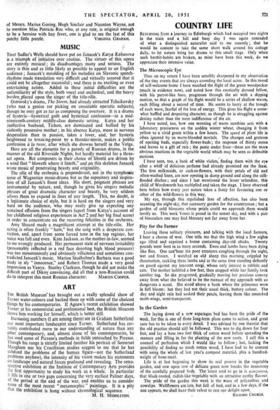ART
THE British Museum' has brought out a really splendid show of Turner water-colours and backed them up with some of the choicest things by his contemporaries. If Agnew's recent exhibition showed Turner at his commercial and professional best, the British Museum shows him working for himself, which is better still.
Increasing numbers (I am among them) sec in Graham Sutherland our most important landscapist since Turner. Sutherland has cer- tainly contributed more to our understanding of nature than any other contemporary, and, almost alone of his contemporaries, he has used some of Picasso's methods in fields untouched by Picasso. Though his range is strictly limited (neither his portrait of Somerset Maugham nor his Crucifixion studies suggest to me that be has subdued the problems of the human figure—not the Sutherland problems anyhow), the intensity of his vision makes his statements on landscape and natural forces profound and revealing. The retro- spective exhibition at the Institute of Contemporary Arts provides the first opportunity to study his work as a whole. In particular it fills in one or two gaps concerning the very earliest Palmer days, of the period at the end of the war, and enables us to consider some of the most recent " metamorphic " paintings. It is a pity that the exhibition is hung without chronological sequence. .
M. H. MIDDLETON.


































 Previous page
Previous page